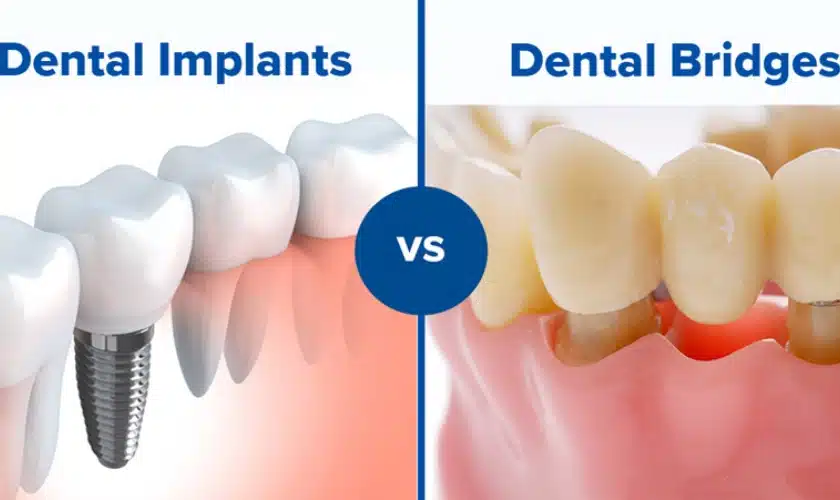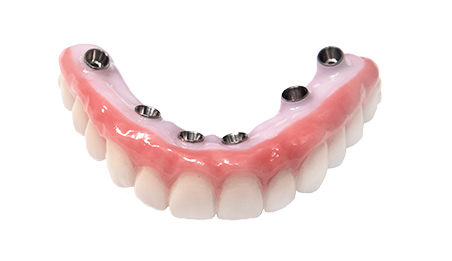Getting The Dental Sense To Work
Getting The Dental Sense To Work
Blog Article
Dental Sense Can Be Fun For Everyone
Table of ContentsThe Best Guide To Dental SenseGetting The Dental Sense To WorkHow Dental Sense can Save You Time, Stress, and Money.The 4-Minute Rule for Dental Sense
are clinical tools surgically implanted right into the jaw to recover an individual's capacity to chew or their appearance. They offer support for artificial (fake) teeth, such as crowns, bridges, or dentures. When a tooth is lost due to injury or illness, an individual can experience complications such as fast bone loss, malfunctioning speech, or changes to eating patterns that cause pain.Oral implant systems consist of an oral implant body and dental implant joint and might also include a joint addiction screw. Kids dental. The oral implant body is operatively inserted in the jawbone instead of the tooth's root. The dental implant joint is usually connected to the dental implant body by the joint addiction screw and prolongs with gum tissues right into the mouth to support the connected synthetic teeth
(https://www.ted.com/profiles/48604569/about)Structure of The Oral Implant System choosing oral implants, talk with your dental service provider regarding the possible advantages and threats, and whether you are a prospect for the treatment. Points to think about: Your general wellness is an important factor in establishing whether you are a good candidate for dental implants, the length of time it will take to heal, and for how long the dental implant might remain in area.
Smoking cigarettes might influence the recovery process and lower the lasting success of the dental implant. The healing process for the implant body may take a number of months or longer, during which time you normally have a temporary abutment in location of the tooth. the oral implant procedure: Carefully comply with the oral hygiene instructions offered to you by your oral provider.
All About Dental Sense
Implant failure can result in the need for one more procedure to deal with or replace the dental implant system. Recovers the capacity to eat Recovers cosmetic appearance Helps maintain the jawbone from shrinking because of bone loss Protects the health of the surrounding bone and gum tissues Aids keep surrounding (nearby) teeth secure Improves high quality of life Damages to bordering natural teeth during implant placement Injury to the surrounding tissues during surgical treatment, such as sinus perforation Injury throughout surgical treatment (for instance, crack of surrounding jawbone) Inadequate feature, such as feeling like the teeth do not attack with each other normally A feeling that the tooth is loosened or turning in area resulting from an abutment screw loosening up Implant body failing (looseness of the implant body) as a result of systemic infection, which might be most likely in people with uncontrolled diabetes mellitus as a result of neighborhood infection informative post in bone and gums sustaining the implant body because of delayed healing, which might be a lot more most likely in patients that smoke Difficulty cleaning the gums around the dental implant, resulting in bad dental hygiene Untreated gum condition Post-surgical tingling due to nerve impingement or damage Constantly alert wellness treatment service providers and imaging professionals that you have dental implants prior to any magnetic vibration imaging (MRI) or x-ray procedures.
FDA is not conscious of any type of damaging occasions reported for MRI or x-ray procedures with dental implants. Dental implants systems are commonly constructed from materials that comply with global consensus criteria of the International Organization for Standardization (ISO) or ASTM International. These criteria have details of what makes a secure material.

An oral implant is a structure that replaces a missing tooth. With screw-like gadgets, the cosmetic surgeon inserts an implant into the jawbone, and it acts as a support for a synthetic tooth, called a crown.
The 10-Minute Rule for Dental Sense
Some people are not eligible for dental implant surgical procedure. It is for oral doctors to operate individuals with: acute illnessuncontrollable metabolic diseasebone or soft cells condition or infectionIf these concerns are resolved, a person can have the surgery. In, oral surgeons avoid running on people with: If people with any of the above go through dental implant surgery, there is a higher threat of the implant stopping working.

Oral dental implant surgery is a customized procedure. Offer you time to heal. Connect the article and last crown, bridge or denture.
Next off, your cosmetic surgeon will thoroughly position the dental implant into your jaw. Your surgeon will rearrange your gum tissues and shut the cut with stitches. If your dental implant is near the front of your mouth, your dental expert will make a momentary tooth for you to wear till you heal. That means, you won't have a space in your smile while you recoup.
How Dental Sense can Save You Time, Stress, and Money.
Your copyright can tell you what to anticipate in your circumstance. During the healing phase, your jawbone should fuse to the oral implant. This procedure, called osseointegration, is critical for stability and long-term success. This procedure can take anywhere from 3 to nine months. In some situations, it might take much longer.
Once your dental implant heals, your dental expert can affix the joint (small adapter post) and your last restoration (crown, bridge or denture). This normally takes about one hour to complete and might need a 2nd small surgical treatment. You should not really feel any discomfort during your dental implant procedure because your copyright will make use of drug to numb your gum tissues.
Report this page